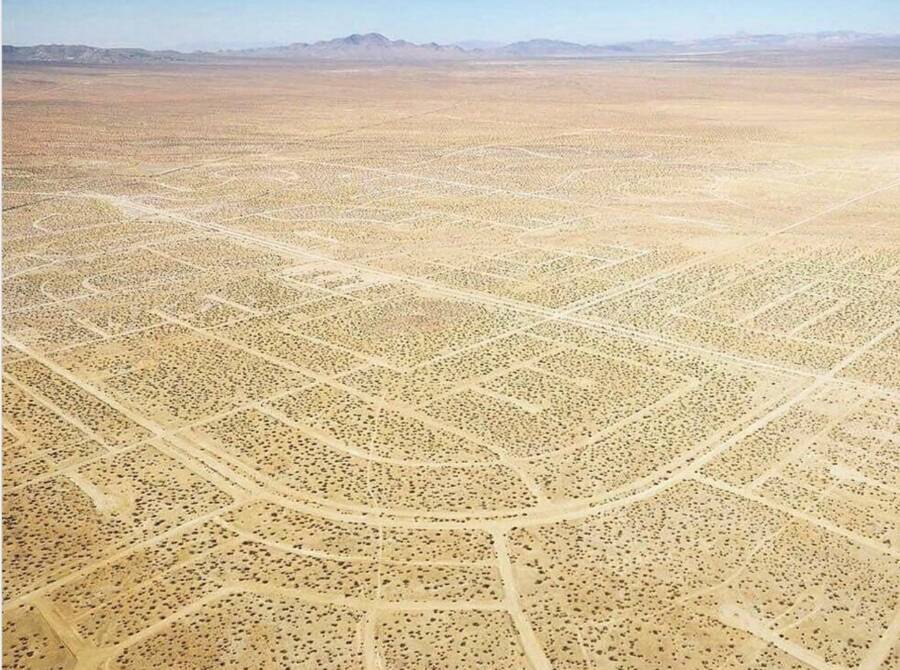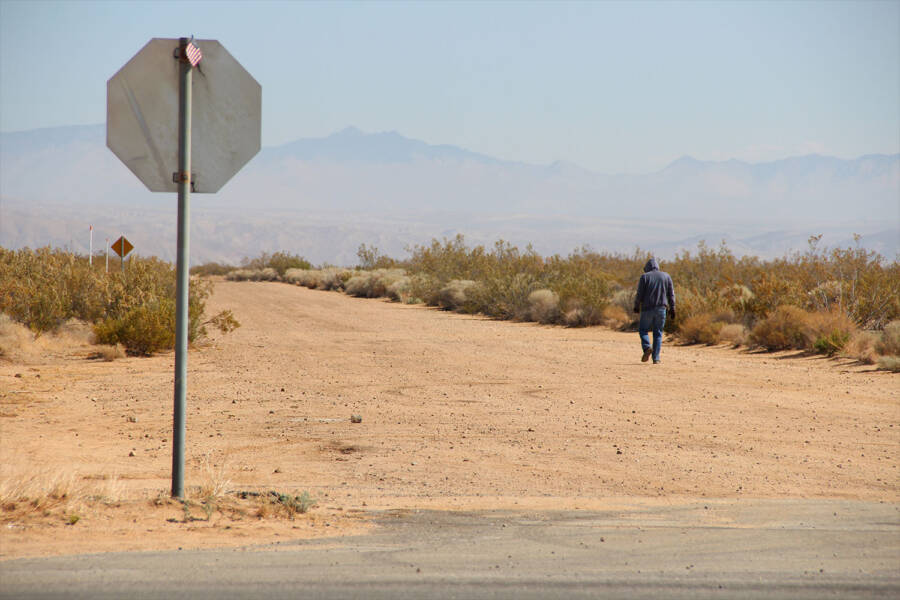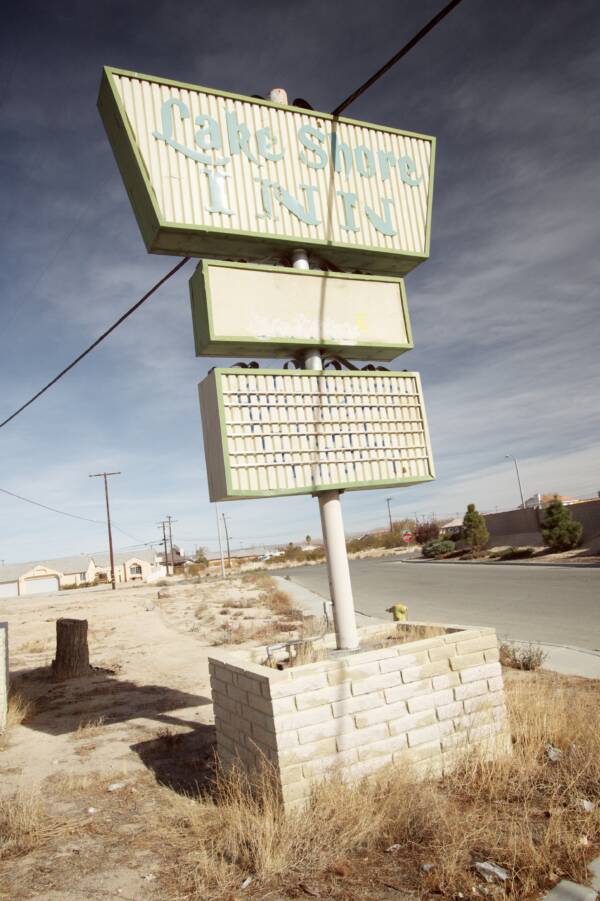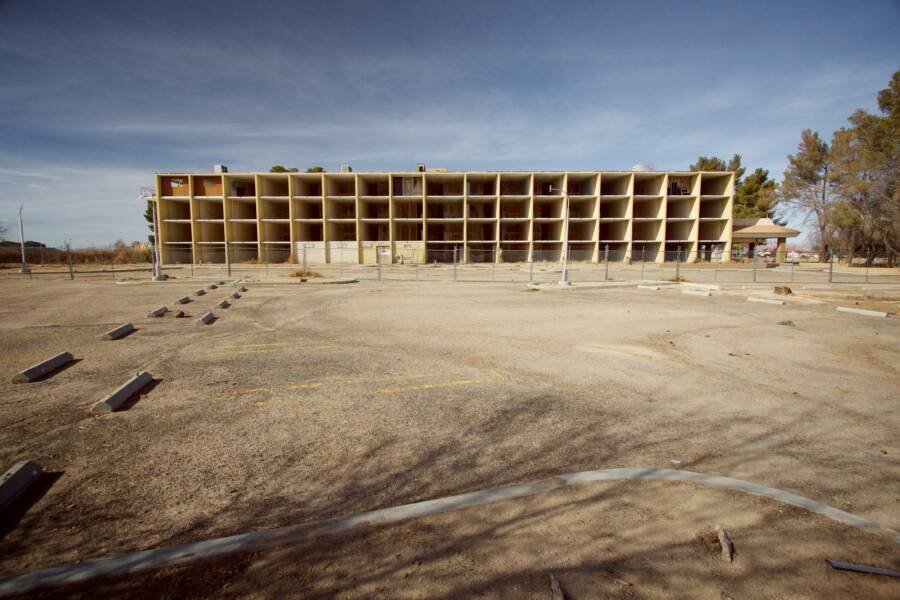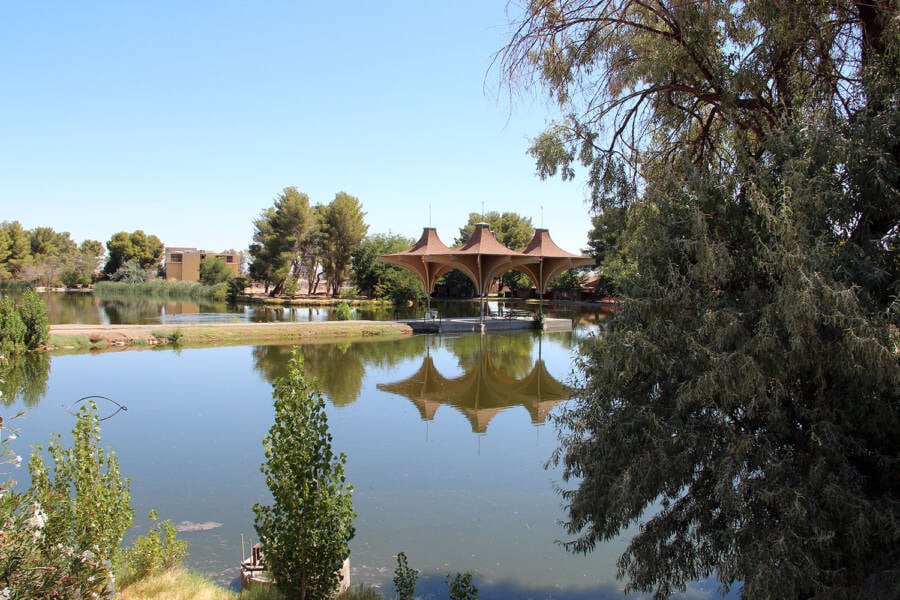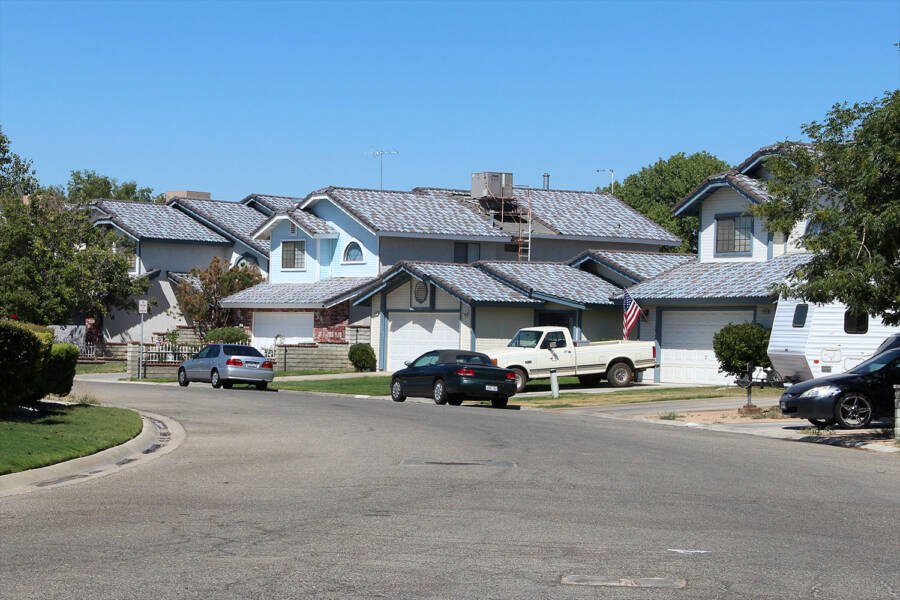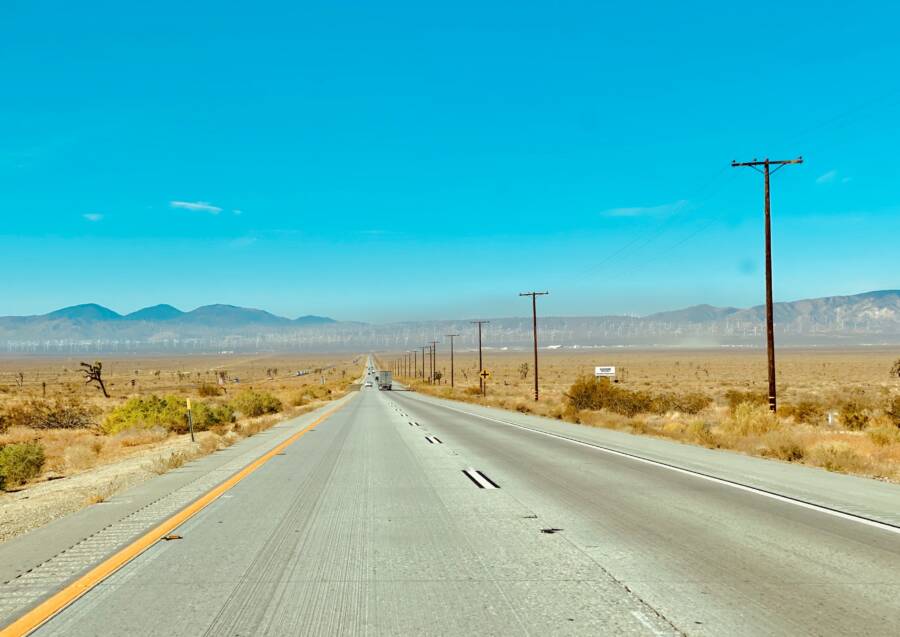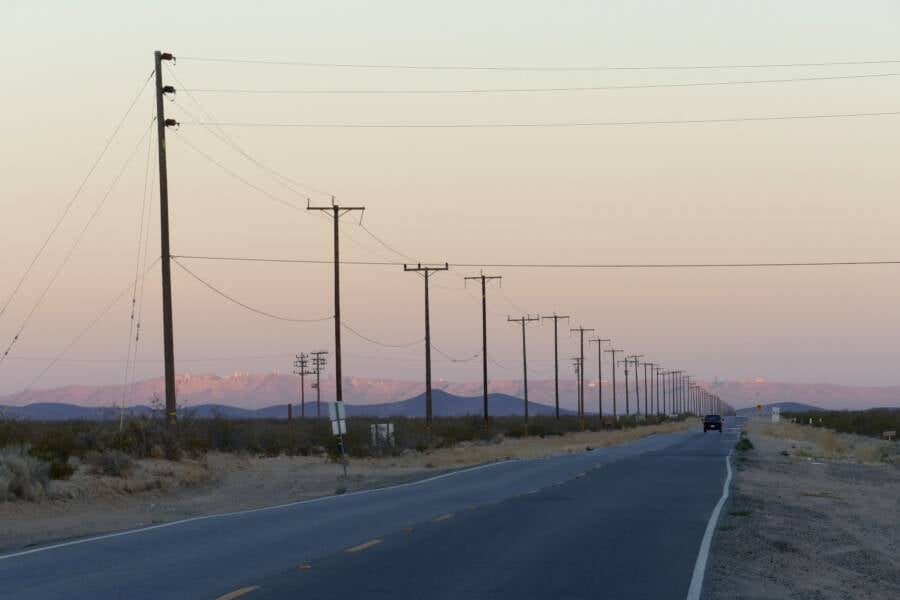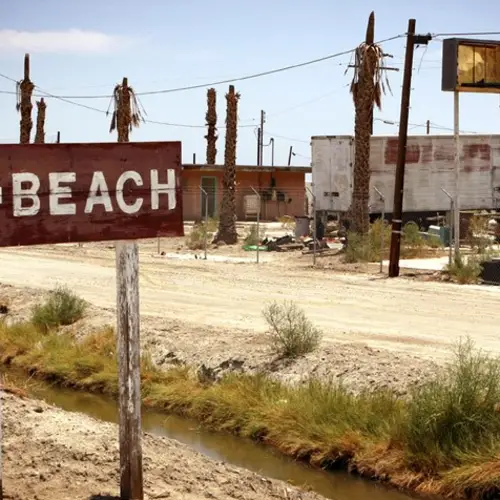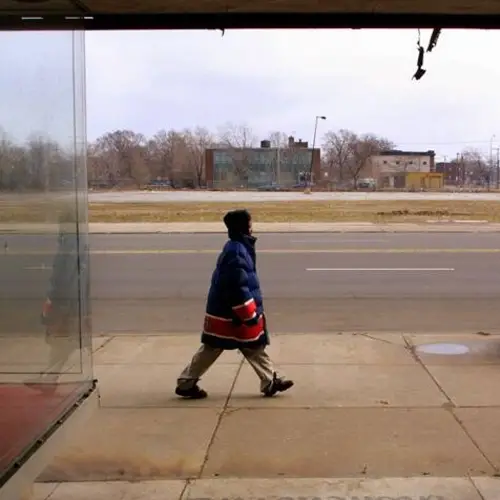Construction on California City started in 1958, and its developer hoped that it would one day be larger than L.A. or San Francisco — but more than 60 years later, its population has yet to break 15,000.
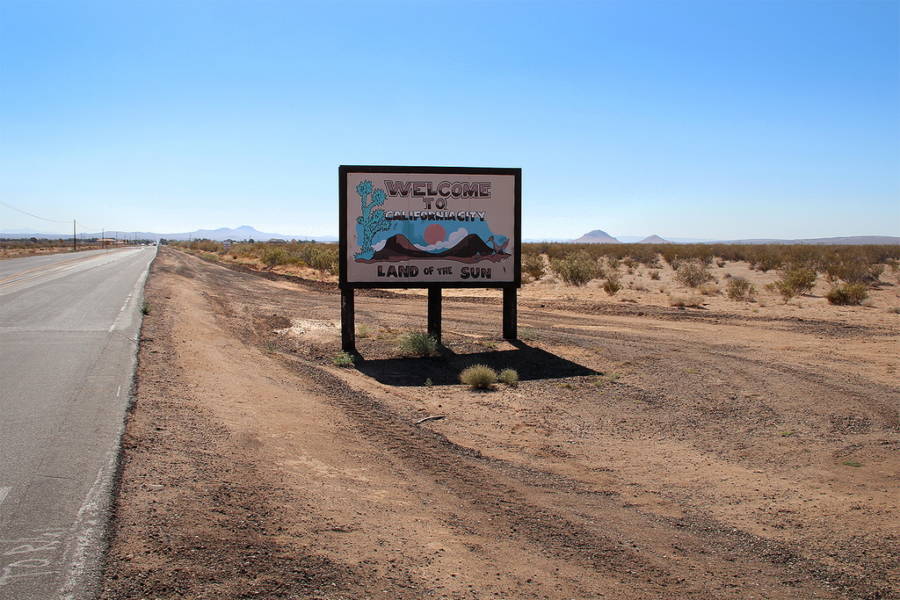
Craig Dietrich/FlickrA sign welcoming visitors to California City, the “Land of the Sun.”
Far out in the desert of Kern County, California, southwest of Death Valley and just north of Edwards Air Force Base, lies an odd collection of empty streets and undeveloped lots that make up California City.
California City started in the 1950s with the highest hopes. It was originally intended to rival Los Angeles in size and population, but lagging development and an unfavorable environment disappointed its developers — and left it a virtual ghost town today.
By 1980, the town had tens of thousands of quarter-acre plots and hundreds of miles of roads that led to nothing but empty cul-de-sacs. Geographically, California City is the state's third-largest incorporated city. However, its vast, never-settled streets stand today in mute testimony of the dreams of its founders.
The Post-War Real Estate Boom Promised High Hopes For California City
California City had its origins in the state's post-war real estate boom. For several decades, a flourishing economy and soaring population drove California's home prices through the roof, per the State of California Capitol Museum.
The first wave of returning World War II servicemen, flush with VA mortgages, sparked rapid expansion in Los Angeles and the Bay Area. Later, a tsunami of tech experts founded Silicon Valley and drove prices higher than anyone could have foreseen just a few years prior.
Furthermore, large-scale immigration from Mexico during this period added to a general housing shortage that boosted prices higher still.
In this environment, it was virtually impossible to lose money investing in real estate. All anyone had to do was to buy a few thousand acres of worthless scrubland, secure access to the state's all-important water vouchers, and sell the property in quarter-acre units to new arrivals.
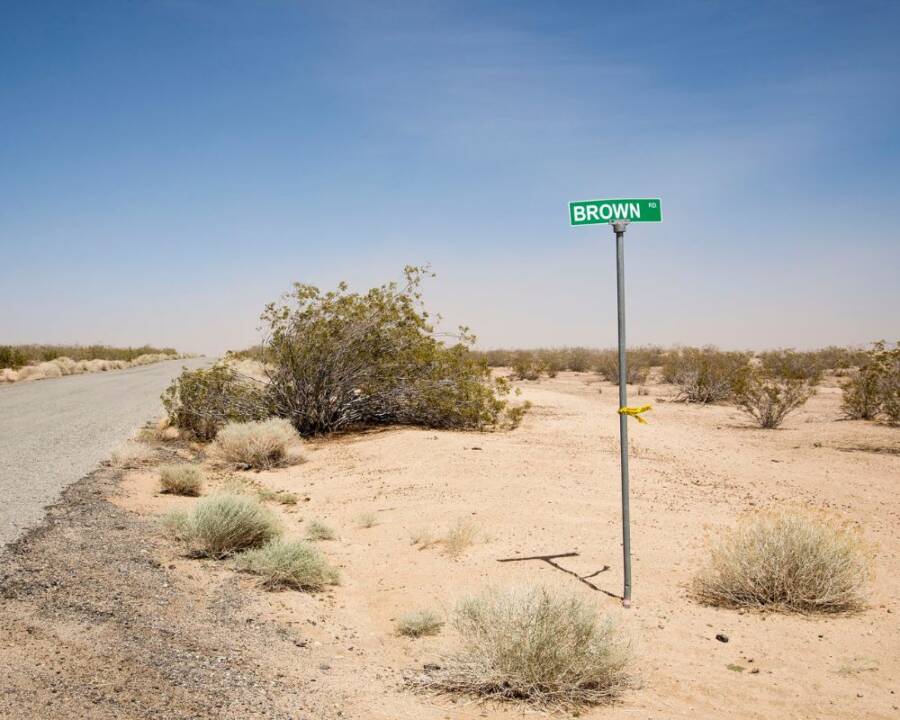
Wikimedia CommonsAll of California City's empty roads have names, map designations, and even signs — but no people or buildings.
That was sociology professor Nat Mendelsohn's plan when he bought up 82,000 acres of completely inhospitable dirt in the empty Mojave Desert, per WIRED.
Mendelsohn and his family had immigrated to the United States in the 1920s from Czechoslovakia. He had always been a gifted student, and his background could hardly have been better for a future town founder. Trained in sociology, he specialized in rural land use, and he applied his knowledge during World War II as a government analyst studying farm profitability.
He developed many ideas about how rural communities thrive, and after the war, he had the chance to develop a small town in California called Arlanza Village. Mendelsohn made a success of this venture by activating an abandoned Army industrial park and transforming it into a factory to provide jobs.
That attracted new residents to the area, which fueled the steady growth of his town. Arlanza Village had been a collaborative affair, with multiple investors and speculators determining how it was organized. However, the open tracts in the Mojave promised Mendelsohn something he couldn't have in over-settled areas: total control.
Nat Mendelsohn's Dream City Failed To Attract Prospective Residents
In 1956, Nat Mendelsohn used the considerable funds at his disposal from previous land deals to buy up the enormous Mendiburu & Rudnick Ranch near Mojave, California. At a glance, the site looked promising. The ranch was watered by 11 abnormally productive wells that never seemed to run dry, per the East Kern Historical Museum Society. Irrigation from these wells watered fields full of alfalfa that stood out against the dusty plain.
For two years, Mendelsohn would walk the grounds of his dream city and sometimes camp on a high place he named Galileo Hill. By 1958, Mendelsohn's dream city had been plotted out. The site was to be organized around an artificial lake and several parks, with scores of large suburban neighborhoods winding around the city core like the layers of an onion.
By the time brochures went out to prospective homebuyers that year, crews were at work clearing brush and carving out roads. Most of the streets in California City had names before the ground was broken on a single house. Signage was put up, realtors were contracted, and Mendelsohn thought he only had to wait for the money and residents to start rolling in.

Wikimedia CommonsA faded wooden sign invites new residents to explore what California City has to offer.
It wasn't to be, however. Unlike Mendelsohn's earlier projects, which had been in reasonably easy-to-reach places like Riverside, California City was way out in the desert and very far away from anything anybody would want to live near. There was Edwards Air Force Base, but it had housing of its own for its staff and their families.
Worse, Mendelsohn's enthusiasm was sabotaging his project. Every lot that was cleared for construction created a large patch of exposed dirt.
When the Santa Ana winds kicked up, this dust swept through the town like a sandstorm. More than a few potential residents decided against living so far away from civilization if the place they were moving to looked like a dust bowl. Some parts of town picked up residents, but it was only a fraction of what Mendelsohn had been hoping for. Soon, his dreams began to fade.
Despite Some Slow Growth, Mendelsohn Soon Gave Up On California City
California City celebrated several milestones before its shortcomings became clear. The town's first post office opened in 1960, and soon afterward it got a ZIP code. Incorporation followed in 1965, when Mendelsohn was still making frequent trips to Galileo Hill to set up his telescope and gaze at the stars. (No people meant no light pollution.)
As an incorporated city, the town could start its own police and fire departments, which it did almost immediately, despite having a population of fewer than 1,000 people. Still, many potential residents steered clear of the oddly hopeful city in the desert, and gradually Mendelsohn's visits became less frequent.
California City went through a shakeup in 1969, as its population crested 1,300 for the first time. Thoroughly fed up with wasting money on a patch of barren desert that was bigger than some federal parks, Mendelsohn sold his controlling share in the town to a consortium that year. For the last 15 years of his life, Mendelsohn rarely brought up his one major failure.

Wikimedia CommonsTens of thousands of acres of still-undeveloped land make up most of California City, though the roads have been laid out for decades.
But the city didn't just go away because its founder gave up.
In the 1970 census, California City was recorded as having 1,309 residents. By 1980, that number had doubled to 2,743. The town doubled in size again in the next 10 years, with a population of 5,955 in 1990. It seemed as if Mendelsohn's dream had just been a little ahead of its time and that California City would double its population every decade until it really was a rival of Los Angeles.
That still wasn't to be, however. As the population grew, water from those miracle wells started running out, and water vouchers from the state got more expensive.
By 2000, California City had only increased in size by 40 percent, to 8,385 residents. In 2010, that number was just 14,120. And by 2020, there were still fewer than 15,000 citizens. Meanwhile, Los Angeles boasted a population of nearly four million. Mendelsohn's mammoth dreams of his development becoming a major metropolis may have never panned out — but California City isn't completely abandoned.
California City's Residents Remain Optimistic About The Future
Over the years, the people of California City have grown to be proud of their odd little town's quirks, such as the endless miles of slowly crumbling boulevards nobody has ever driven on. And so they've stayed.
In the 1990s, the Corrections Corporation of America opened a job-generating prison nearby, and canny developers turned the city's lakefront property into a pleasant area that rivaled that of any American suburb.
California City still controls the enormous wastelands around its civilized core. In any other part of California, these would have long ago been settled by tech workers who don't mind a three-hour commute for a chance to save money on their mortgages. However, the extremely remote and harsh environment of the city continues to work against it.
This "wasteland" is also where the annual Wasteland Weekend event is held, a festival with an aesthetic that should be familiar to anyone who has seen a Mad Max film.

Facebook/Wasteland WeekendTwo attendees of Wasteland Weekend in costume.
The event touts itself as the "world's largest post-apocalyptic festival," with attendees adorning themselves in "wasteland fashion" such as gas masks, clothing pieced together from rusted scrap metal and plastic, and model weapons.
Though California City may be empty, and the area around it may in fact be a wasteland, the town's leadership still seems to think there's a chance that it could yet grow to the size of Los Angeles.
Stranger things have happened — especially in California.
After learning about the bizarre history of California City, check out the other peculiar California towns of Zzyzx and Colma, the city of the dead.
